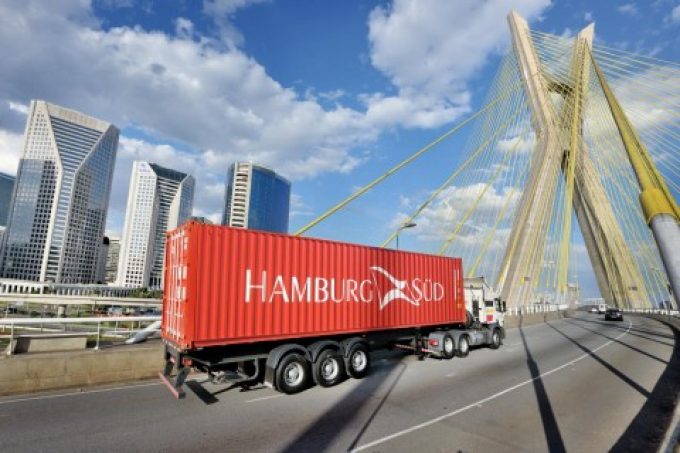Liner industry frustration as India demands millions in taxes
Foreign-flagged container shipping lines facing the heat from Indian tax authorities have been lobbying the ...
GM: RAISING THE ROOF GGM: IN FULL THROTTLE GZIM: MAERSK BOOST KNIN: READ-ACROSSMAERSK: NOT ENOUGHMAERSK: GUIDANCE UPGRADEZIM: ROLLERCOASTERCAT: HEAVY DUTYMAERSK: CATCHING UP PG: DESTOCKING PATTERNSPG: HEALTH CHECKWTC: THE FALLGXO: DEFENSIVE FWRD: RALLYING ON TAKEOVER TALKODFL: STEADY YIELDVW: NEW MODEL NEEDEDWTC: TAKING PROFIT
GM: RAISING THE ROOF GGM: IN FULL THROTTLE GZIM: MAERSK BOOST KNIN: READ-ACROSSMAERSK: NOT ENOUGHMAERSK: GUIDANCE UPGRADEZIM: ROLLERCOASTERCAT: HEAVY DUTYMAERSK: CATCHING UP PG: DESTOCKING PATTERNSPG: HEALTH CHECKWTC: THE FALLGXO: DEFENSIVE FWRD: RALLYING ON TAKEOVER TALKODFL: STEADY YIELDVW: NEW MODEL NEEDEDWTC: TAKING PROFIT

Hamburg Sud’s entry into the mainstream east – west tradelanes in 2015, principally through its slot charter agreement with Middle East challenger carrier UASC, was “badly timed” according to its CEO.
Speaking at the Maersk Group Capital Markets Day in Copenhagen yesterday, Arnt Vespermann, chief executive of Hamburg Sud, said about the iconic company’s strategy to change its focus from being a north – south liner to a global carrier: “I would say timing wise there was room for improvement”.
Following the completion of the $4bn sale to Maersk Line at the end of last year, the Hamburg-headquartered carrier’s profit and loss accounts, which have been published for the first time in 147 years, show the extent of the damage to its bottom line that would have influenced the Oetker Group family in its decision to exit liner shipping.
The P&L accounts, which according to Mr Vespermann, were a closely guarded secret and not disclosed to even senior directors of the company, show that Hamburg Sud’s profits sharply declined from 2015.
According to the snapshot of the accounts Hamburg Sud recorded a net profit of $408m in 2013, which had declined to $238m the next year.
However, by 2015 profitability had plunged to a breakeven result and in 2016 Hamburg Sud recorded a loss of $117m on its trading.
In the ‘global cooperation agreement’ it signed with UASC, the Dubai-based carrier gained entry into north – south trades through slot charters on Hamburg Sud vessels, whereas the German carrier was able to break into the Asia – North Europe and transpacific tradelanes through a reciprocal arrangement.
But in order to capture market share both carriers were forced to adopt an aggressive sales strategy in order to fill the slots that they were purchasing from each other.
Unsurprisingly freight rates were driven down to sub-economic levels and were not even covering the cost of the slots.
Indeed, one senior Hamburg Sud executive admitted privately to The Loadstar at the time that Hamburg Sud was losing around $400 on every box carried from Asia to Europe.
Similar loses were understood to have been incurred by UASC on Latin American trades, where the carrier invested heavily in reefer equipment.
Meanwhile, stressing the need to keep the commercial aspects of the two carriers separate after the acquisition, and the success of the “personal touch” approach to customers by Hamburg Sud, Mr Vespermann said, “there is a reason why a customer books with Hamburg Sud”.
And in the same presentation Maersk’s Soren Toft, who is the new COO of Hamburg Sud, confirmed that all operational functions of the two carriers would be integrated by the second quarter of this year, which he said was “where the savings are”.
Maersk said it is looking for synergy savings of “at least” $350 – $400 per annum from next year.
Nevertheless, Mr Toft admitted that some of the combined market share would be lost or given up.
“Rarely does 1+1 become two when you make an acquisition, and maybe there are also certain customers that we don’t want in the future, when it comes to the cargo mix,” said Mr Toft.
Comment on this article